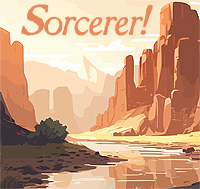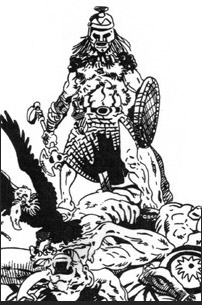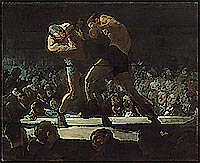Based on extensive work done in Songs of Aryas, and written in response to an inquiry by Bedford, an experimental spear thrower.
The Indo-European peoples, by 1914, had forced every other people either into extinction, membership in, or imitation of their technological society. Haiti and Swaziland are among the few possible exceptions. Even the marginalization of these places had been achieved by The Gun. It thus escapes us, prisoners in our own time that we are, that those martial qualities intrinsic to the conquest of Europe, primarily a commitment to get close, to wage war “to the knife” is what formed the character of the soldiers and adventurers that brought the descendants of the war bands that once migrated out of Asia into Europe, to the pinnacle of world power.
Readings of military history, specifically of unit histories, of such units as the French Revolutionary Corps, the French Legion Estranger, The Union Iron Brigade, The Army of Northern Virginia, the Scottish Highlanders, The Texas Rangers, the Swiss Pikemen, the Zulu Impis, the various British expeditionary forces, The Gurkhas, the U.S. Marines and Navy SEALs,[1] demonstrates that until the advent of the machine gun and industrial level explosives, until that is, war became a storm of steel and men were incidental victims, then even in the age of the gun, those gunmen who sought to get close, to use the bayonet, the rifle butt, the pistol, they were most feared by their foes.
Foot Note 1. These last three forces have achieved much success in late modern warfare by getting close.
This type of warfare is necessary for subjugating and eradicating foes that keep to forested and mountainous cover and inhabit caves, peninsulas and swamps. Thus, the inhabitants of Europe, before and after the advent of the gun, being descendants of tens of thousands of years of close combat, have ventured beyond their homeland as military conquerors more often, in greater depth, in greater breadth and against greater odds than the native races of any other region on earth. Cortez and Pizzaro and Soto led hundreds against millions.
A key misunderstanding of ancient warfare and particularly pre-historic warfare, is that throwing a spear [that is a blade mounted on a shaft] is always superior to using it by hand. This is regarded as 100% superior in the killing of large mammals by all paleoanthropologists despite a total lack of evidence. It seems this is based on our modern, frail minds and bodies and our reliance on firearms for ages now.
Animals who are stricken with a single blade mounted shaft of simple ancient type, almost always run a great distance. Modern double razor steel arrow heads often drop animals dead. Having an animal plunge into cover can subject the hunter to a grizzly bear attack, for instance. Imagine being a hunter with no high tech arrow, and in competition with enemy tribes, enemy races, giant hyenas, prides of lions, giant short faced bears, dire wolves and such. In that situation, I would rather stab a bull at dawn or dusk by a river bank, so that I could stab it again.
Further, are the following forensic facts:
Larger blades cause larger bleeds.
Larger blades in light shafts are problematic in terms of flight properties.
A blade of larger type [spear rather than arrow] drives deeper when held in two hands than when cast with one hand.
The thrust spear may be twisted inside before being withdrawn to gain the same effect as the modern double point four edged arrow head.
The thrown blade may stay in and fully or partially plug the wound.
The thrown blade may not be reused without first chasing and catching the animal.
Roughly, a thrust blade over a thrown blade has the following benefits:
-1/2 X more force for more depth from the extra arm on the haft, two handed use permits more leg and trunk strength to be transferred to the thrust
-2 X more mass and edge for more bleed per depth
-2 X more wound area per one thrust as the blade is used to make a second perpendicular cut while being taken out
-2 to 10 X more wounds inflicted by the same spear head
-Use of the animal’s massive weight and strength to impale itself more deeply on the blade, making, bears, boars and bulls, very combative prey animals, prime food sources. I wonder, does the fact that preferred close kill prey with combative tendencies and great meat loads, all having names beginning with the same letter B have anything to do with their perceived heroic qualities?
Boar tusks were used for making Homeric helmets.
Boar tusks and images on helmets were employed by the heroes in Beowulf.
Ancient shield men covered their shields in bull hide, even as African spear men made their shields of bull and rhino hide.
Ancient boxers wrapped their hands in bull hide or ox hide straps, not cow hide.
Plains Indians made shields of buffalo hide…
Beyond the imagery of the heroic beast of prey we have the physical reality of a thrust from a hand held spear doing from twice to forty times as much damage as a cast spear.
Of course, we, as jabbering sissy apes beyond the end of Inquiring Time, can only imagine standing as a mob in ambush hurling massed spears and stones at a pissed off monster, which would totally ruin the hide and the meat.
So the mob does think, not like a hero, but like some whimpering thing, a slinking, slithering zero.
It is of interest that the chief gods of ancient myth were hunters and warriors and that, in story at least, they were in the habit of hunting in pairs or alone.
As skittish as elk and dear are. Bob, a hunting guide from Utah, has related to me accounts of him having stalked close enough to one of these big animals to take it with a spear thrust if he were so armed, so close that he could have, “reached out and touched the thing.”
So, Bedford, if we were locked up in prison and a man threw a knife at you on the yard and another cornered me in the shower with his identical knife, who would have a better chance at surviving the attack?
No one has had a knife thrown into them twice and no one has been killed by a thrown knife to my knowledge. The average number of stabs used to kill in Baltimore as of the year 2000 was 8.
Please, if we get attacked in thought prison together, run to me with the knife sticking out of your back so I can remove it [without twisting it] and use it to stab our attackers!











